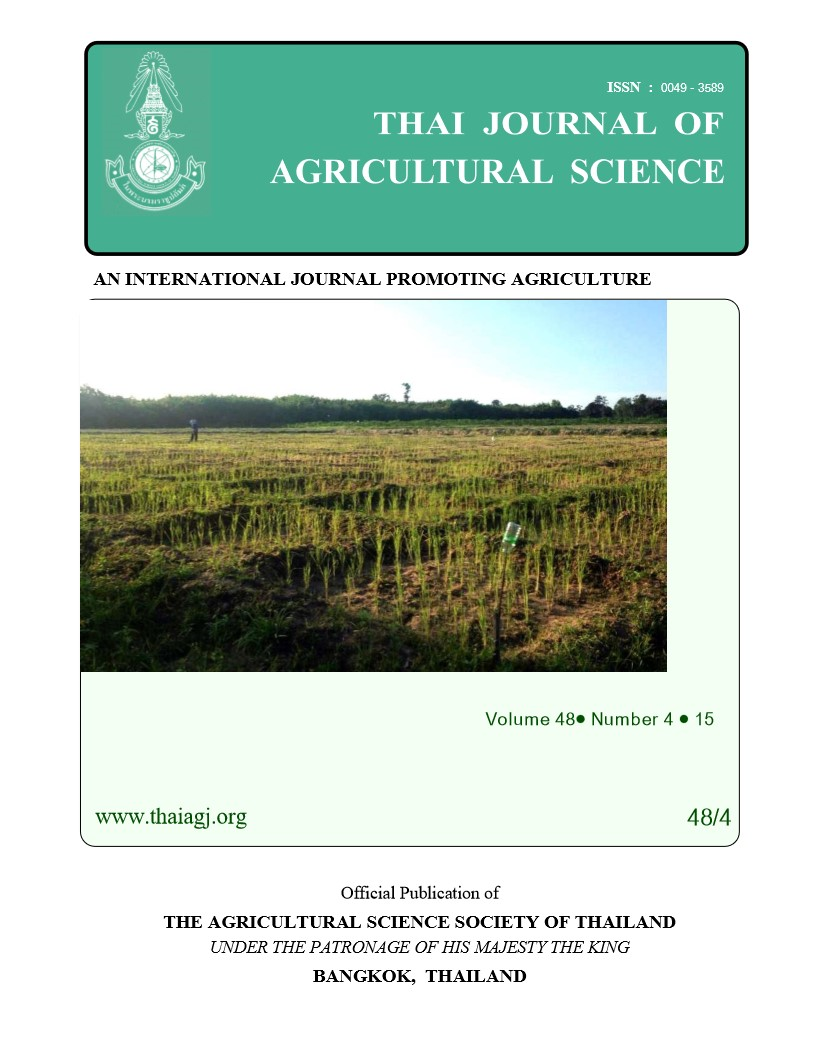The Effects of Urea on Essential Oil Composition of Thymus vulgaris Linn.
Main Article Content
Abstract
Thyme or Thymus vulgaris Linn. (T. vulgaris) belongs to family Lamiaceae. It is considered the principal species for its uses, fresh and dried as a culinary herb. Its essential oil (EO) also employed in perfumery and in food industry. The EO possesses antiseptic and antifungal properties and is used for medicinal purposes. Urea is one of the major nitrogen (N) forms supplied as fertilizer in to agriculture crops. The effects of urea (0, 125, 250, 375 and 500 kg ha-1) on the EO composition were investigated. The highest EO contents (0.5 % and 0.6 ml Plant-1) were recorded with 375 kg ha-1of urea. Twenty components were identified by GC and GC/ MS in the EO of each treatment; thymol, γ-terpinene and p-cymene were detected as the major components which increased with different urea doses. Monoterpenes were the major classes of EO isolated from T. vulgaris herb. The highest values of major components (43, 23.6 and 17.6%) were recorded with treatment of 250 kg ha-1 of urea. The highest values of monoterpene hydrocarbons (MCH) and oxygenated sesquiterpenes (SCHO) (53.6 and 1.3%) were recorded with 375 kg ha-1 of urea. The highest contents of oxygenated monoterpenes (MCHO) (53.6%) and sesquiterpene hydrocarbons (SCH) (0.6%) were recorded with treatments of 250 and 125 kg ha-1 of urea respectively.


